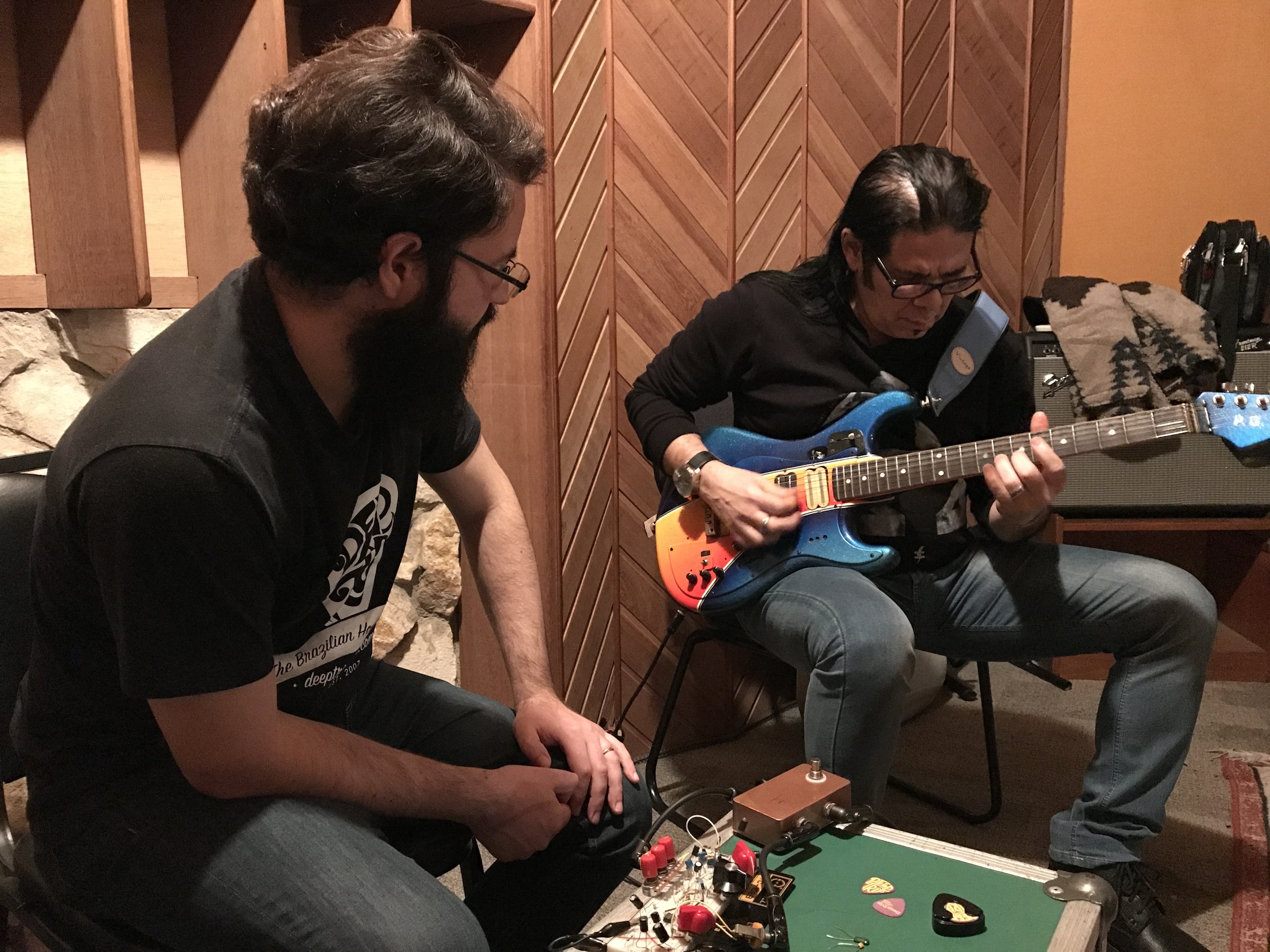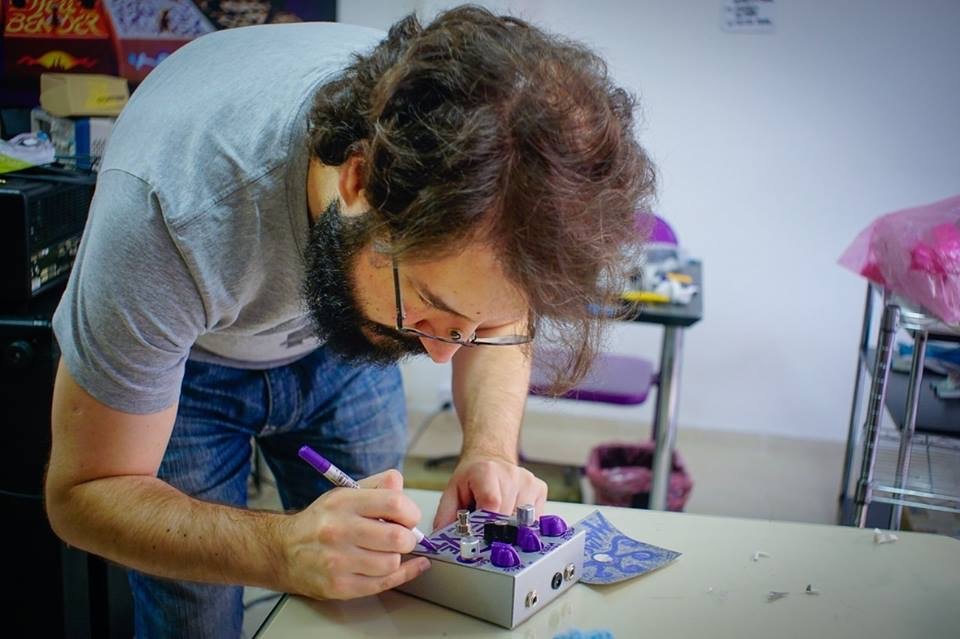MALACAXÊTA
Overdrive/distortion with incredible midrange control
Developed with Brazilian guitar great Pepeu Gomes, covers a huge range of tones.
This semi-parametric active midrange control is like a GPS to your guitar tone.
3-band eq with active capabilities and a special hi-fi audio IC, it's the tone shapping heaven on earth.
First test with the first Malacaxêta prototype. Estúdio Aurora, August/2017.
During one of the first dates with my wife, in 2011, she asked me “what Brazilian guitar player would make you more excited if he used your pedals?” I replied promptly: Pepeu Gomes. 5 years after that, Pepeu came to me during a music expo and asked if I’d accept the challenge to develop this pedal with him.
After years of development (and a pandemic), we present to you the Malacaxêta: an overdrive/distortion pedal developed in four hands and four ears with the genius and idol Pepeu Gomes! Join the waiting list to get priority in the first batch, that will be available in the first semester of 2024!
Malacaxêta is a pedal with enough sustain to make your notes sing beautifully, but also full of dynamic sensitivity to alternate between the sofisticated bossa nova-style chords of Novos Baianos and the soaring solos with long notes only by working on your guitar volume knob! In the heart of Malacaxêta we have the great leap of this pedal: an active equalizer (that needs a dedicated hi-fi audio integrated circuit), including semi-parametric mids with fixed Q (bandwidth). That means that every time you cut or boost the midrange (with the knob at the top) you set the center frequency of that mid band with the bigger knob right in the middle of the pedal
Pepeu trying the last variation of the circuit on breadboard.
SESC Vila Mariana, January/2019.
That midrange control was an explicit request by Pepeu in our first talk about the pedal and, undoubtedly, my biggest challenge. I had to unearth all my old electronics books, study a lot of theory and also the development of hi-fi audio circuits (not intended for instruments), I dug deep in the eq circuits with the help of circuit simulation softwares and took those ideas one by one to Pepeu’s experienced ears. The peculiar detail of the final circuit is that, even with this sophisticated active system for the bass and midrange, the treble control “preferred” to stay out of it. It sounded better as a simpler passive filter, so we left the theory to the side and allowed the musical years to guide us!
Five minutes exploring this equalizer and you’ll already feel as if you had a secret map to tone: cutting or boosting mids, you turn the frequency control and hear lots of classic rock guitar: hollowed-out tones that sound almost like an acoustic guitar, vintage-style mid boosts (from 1960’s treble boosters to 1980’s screamers), seventies in-your-face rock tones, deep cuts for metal-style scooped mids…
Pepeu receiving the final circuit from Du Menegozzo.
MusicShow, September/2019.
After successfully getting the sound Pepeu was looking for and finding myself with this incredible tonal machine in my hand, I made sure to extend the horizons of the Malacaxêta so it could offer much more than that. In other words, the wisdom in Pepeu’s ears opened up the gates to an unimaginable variety of tonal possibilities, and we took all of them!
The gain knob goes with you in that trip, covering a huge spectrum from clean to a nearly infinite sustain landslide. You’ll notice your guitar volume interacts very well with all that, allowing gain variations without drastically affecting the overall tone.
That musician interaction with the device was a central point in all our work on this pedal. We started in theory, calculations, oscilloscope… but everything always had to go through musician’s hands (mainly Pepeu, of course). The back and forth movement generated various prototypes and circuit variations that he made sure to try both in studio and in sound checks, real band situations, and each of those moments caused more and more trips back to the drawing boards, books, oscilloscopes and circuit simulators until we finally reached our goal.
One of those early prototypes has had a lot of stage time since 2018 with his younger son, Xulli, who plays in his father’s band and also in Swing de Vargem Grande. That early circuit had a 3-band passive equalizer with a bandwidth control for the mids. It sounds great, but couldn’t deliver all the mid focus and control that Pepeu was looking for.
Workshop by Pepeu Gomes at the Concepção Guitarra booth in MusicShow expo, September/2019.






